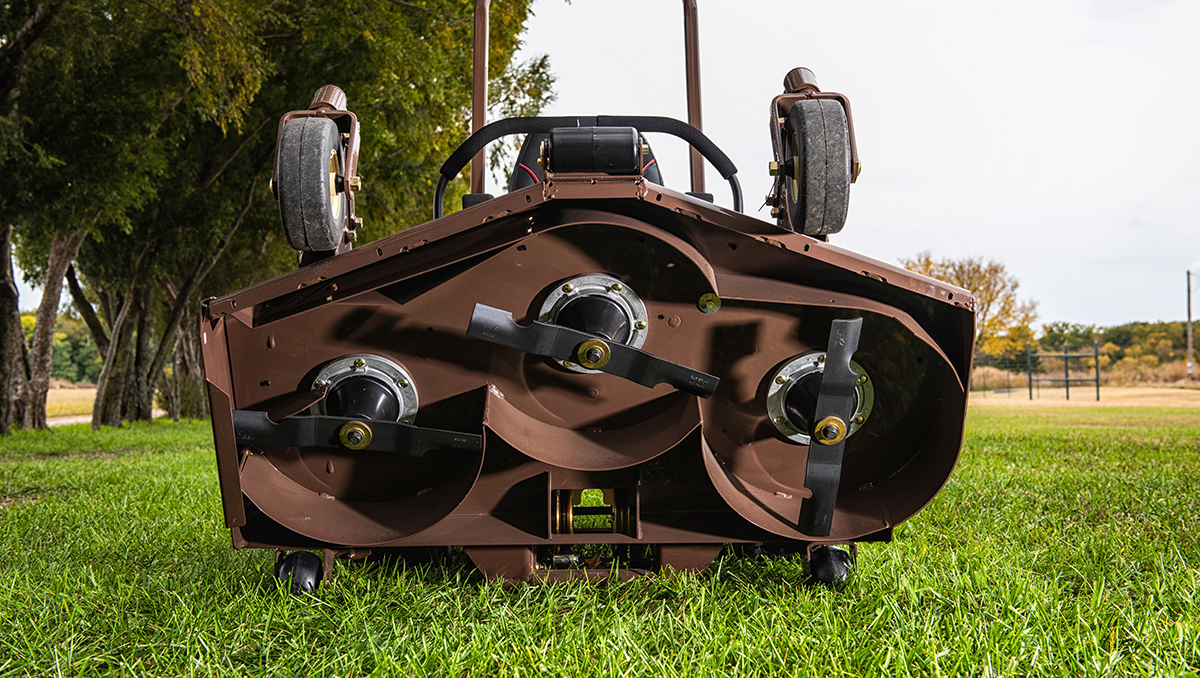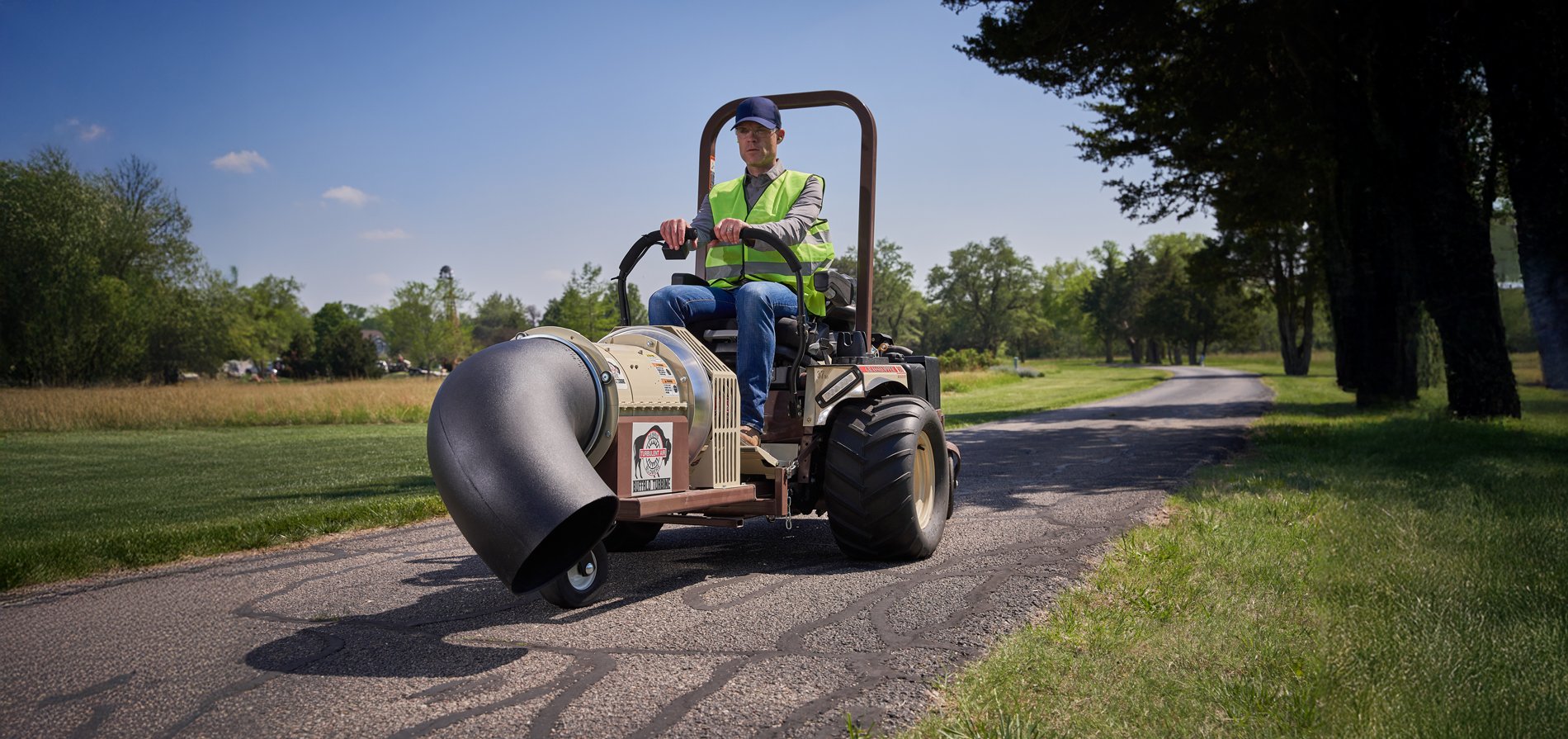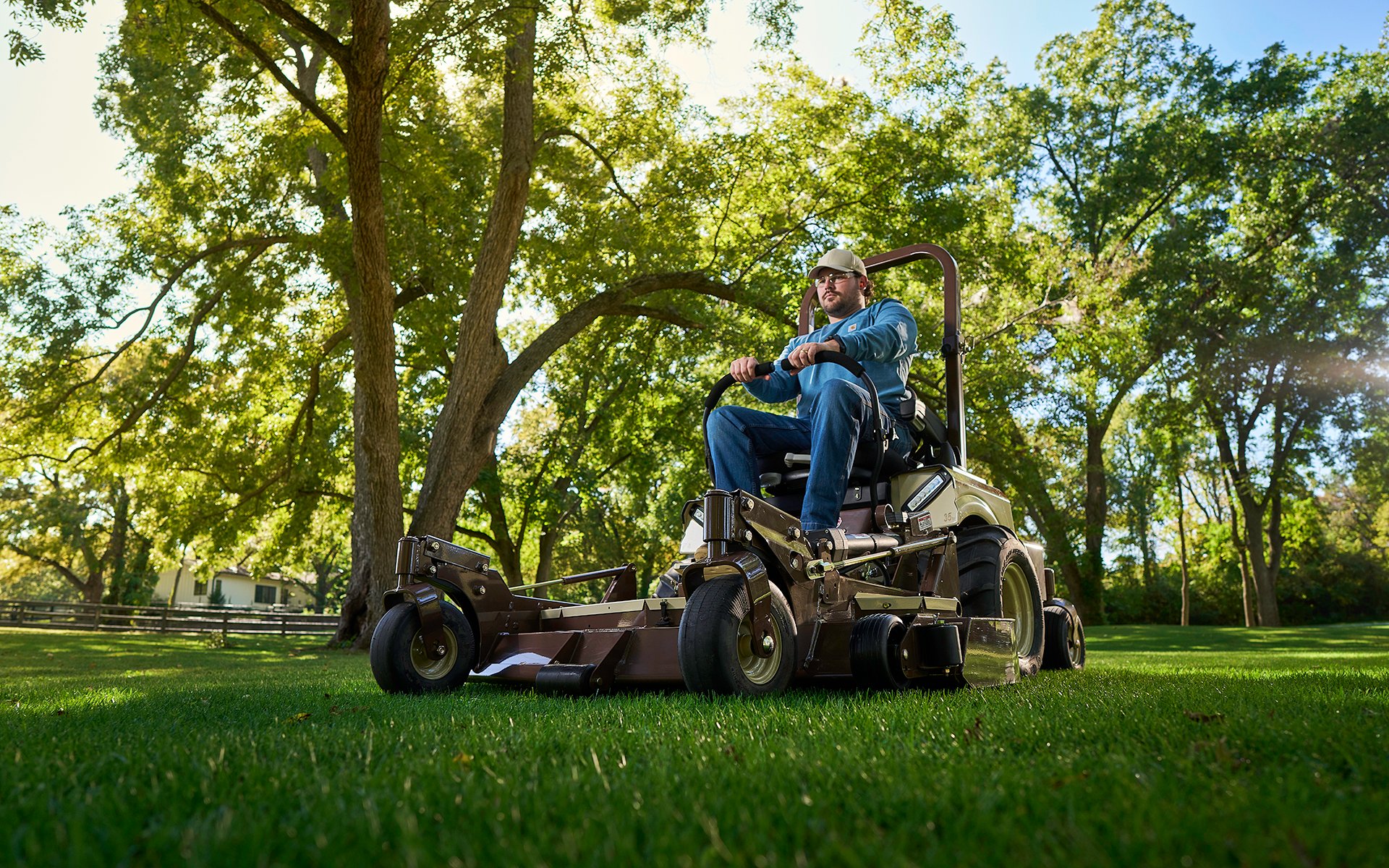This is Part IV of our Lawn Care Tip of the Month blog series.
While many dread this date on the calendar year (you know, the deadline to file your taxes and all), the midway point in April should have you thinking green. Not necessarily a tax refund, though that would be nice, too.
By this time, the grass is waking up from its winter hibernation, and tulips and lilies are putting a splash of color on a canvas of green.
Now that the grass is growing, it’s time to talk about mowing. Finally, you can pull your mower out the garage and get it all ready for the season ahead.
But before you put the blades-to-grasses, stop to consider how tall – or short – you should be mowing. Proper mowing heights can have a significant impact on the health and appearance of your lawn.
There are several benefits to setting your mower to the proper mowing height. By letting grass grow to the proper height before mowing, followed by cutting it to the recommended height, you allow a healthier root system to develop. And, by keeping mower blades sharp, you save fuel and prevent grass from browning out.
The benefits of proper mowing thus include a greener, healthier lawn
But, you may ask, “Does mowing higher mean I’ll be mowing more often?”
No, the opposite is true. Cutting the grass too short does not save you any time. The good news is that maintaining grass at the proper height may require less time on the mower than if you were to cut it too short. There are two reasons for this.
First, at higher cutting heights, the mower blades do not have to cut through the harder stems which typically grow closer to the ground, and there’s also less risk of scalping. Less power required to cut the grass translates into faster mowing speeds and less fuel consumption.
Second, if you follow the “1/3 Rule” (see chart), the higher you cut your grass, the more growing time you allow before the next mowing. Keeping up with the 1/3 Rule requires adjusting your mowing frequency relative to the time of year.
How do you mow at the proper height?
For most cool-season grasses, 3 inches or higher allows the grass to develop a fuller, greener canopy to shade out weeds. At this height, the grass can also develop a deeper root system to keep the turf greener and healthier during hotter, drier periods. The extra surface shade helps hold moisture in the ground and allows healthy organisms to thrive in the soil—microorganisms which help break down thatch and nourish roots. A cooler, wetter root zone invites earthworms, which naturally aerate the soil. Mowing a little higher than what you may be accustomed to and cutting back on chemicals helps restore the natural line of defense against weeds.
Warm-season grasses have evolved their own natural defenses against heat and drought, but they still require proper mowing for optimum appearance. Southern grasses spread through rhizomes, or runners, close to the soil surface. Rhizomes are more stem-like and sprout foliage while anchoring with roots. Stem-like structures decompose more slowly and present a more serious thatch threat. Even so, weed infestation and drought dormancy are minimized by raising the cutting height to the upper end recommended for the turf variety.
In moderate climates around the world, cool and warm seasons both compete in the same lawns. When average daily temperatures approach 80°F (26°C) the warm-season grasses begin to take over. Depending on which grass is dominant in your lawn, you may have to adjust your cutting height throughout the year.




